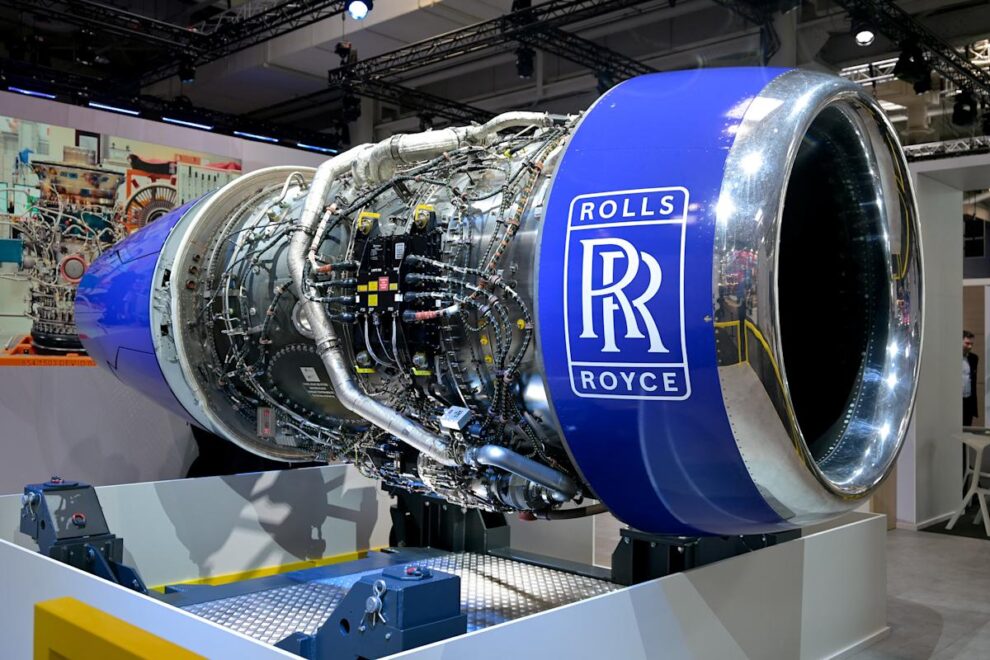Shares in Microsoft jumped by almost 10% in pre-market trading after the company announced a surge in quarterly profits thanks to record revenues from its cloud computing division.
Net income increased 24% year on year to $27.2bn (£20.51bn), surpassing analysts’ expectations for $25.3bn in the fourth quarter of Microsoft’s fiscal year, ending June 30. Revenue increased 18% to $76.4bn in the fiscal fourth quarter ending June 30, up from $64.7bn a year earlier. That’s the fastest growth in more than three years.
The company’s Intelligent Cloud unit, which includes the Azure cloud, produced $29.88bn in revenue in the final quarter. For the entire fiscal year, this AI division saw revenue surge 34% to a record $75bn.
The company predicted its capital expenditure for the next fiscal year would top $100bn, a 14% increase from the year prior.
It’s the fifth quarter in a row that Microsoft has beaten Wall Street’s expectations.
Read more: Shell announces further $3.5bn in share buybacks as profits beat estimates
“Cloud and AI is the driving force of business transformation across every industry and sector,” said Satya Nadella, chairman and chief executive officer of Microsoft. “We’re innovating across the tech stack to help customers adapt and grow in this new era, and this year, Azure surpassed $75bn in revenue, up 34%, driven by growth across all workloads,” Nadella said in a statement.
Shares in the company are trading a near record of $513, up 22% since the start of the year.
Meta shares were up by 12% ahead of the US opening bell after posting a bumper set of financial results that eased concerns it was lagging rivals in the AI race.
The firm, which owns Facebook, Instagram and WhatsApp, said revenue for the three months to the end of June rose 22% from the same period last year to $47.5bn. Meanwhile, profits jumped by 36% to $18.3bn. Profit per share came in at $7.14, above analysts’ estimates.
Meta said it expected its total expenses for 2025 to come in the range of $114bn and $118bn. The company added its AI initiatives will “result in a 2026 year-over-year expense growth rate that is above the 2025 expense growth.”
“I think there are all these questions that people have about what are going to be the timelines to get to really strong AI or superintelligence … we’ve observed the more aggressive assumptions, or the fastest assumptions, have been the ones that have most accurately predicted what would happen. I think that that just continued to happen over the course of this year too,” CEO Mark Zuckerberg said on a conference call with analysts.
Reality Labs logged an operating loss of $4.53bn while recording $370m in sales during the same period. This division oversees the Quest line of virtual reality headsets in addition to the Ray-Ban Meta smart glasses.
Matt Britzman, senior equity analyst at Hargreaves Lansdown, said: “Meta has knocked it out of the park. Pick your metric and Meta crushed it, from ad revenue growth to daily users, all the way down to the profit lines.
“AI is clearly delivering real-world benefits for advertisers, and they’re willing to pay more as a result. Average price per ad was up 9% over the quarter, a clear indication that Meta is delivering an improved product for both users and advertisers.
“The broader focus now turns to Meta’s mammoth AI investment plans and whether it can continue to manage those costs without hurting earnings or free cash flow.
“CFO commentary called out higher costs next year, and another year of similar capex growth, which many analysts did not have on their bingo cards. Clearly, all this spending adds some near-term risks to the bottom line, but Meta looks set to be a clear winner in the AI space over the longer term.”
Shares in the AI darling were trending in pre-market trading as Morgan Stanley raised its price target to $200 from $170 while maintaining an Overweight rating on the stock.
“We think that the increase in enthusiasm for AI semis is justified by long-term strength in the business,” Morgan Stanley analyst Joseph Moore said in a client note.
“AI strength is exceptional in both supply and demand,” Moore said. “All of our data points and contacts are telling us that customers need more compute, and we are seeing a clear acceleration in inference workloads driving that.”
Moore added that he was not concerned about the higher valuations for AI chipmakers.
“While stock prices have moved higher, our conviction on AI spend durability in 2026 continues to grow,” he said. “It is our view that at least three of the four top cloud customers have asked for upside, and we have seen even more notable strength from neoclouds and consumer internet companies.”
Read more: Mercedes-Benz, Porsche and Aston Martin among latest carmakers hit by Trump’s tariffs
Meanwhile, China raised concerns over potential security risks in Nvidia’s H20 artificial intelligence chip, in a blow to the US company’s push to revive sales in the country after Washington granted approval for the export of a made-for-China chip.
The Cyberspace Administration of China, the country’s internet regulator, said it was concerned by a US proposal for advanced chips sold abroad to be equipped with tracking and positioning functions.
Shares in Amazon are 3% higher in pre-market trading, as the e-commerce giant prepares to announce second quarter results later in the day.
“Investor sentiment is broadly positive, with expectations improving in recent weeks following a disappointing 2Q guide that was delivered in early May,” Wedbush analyst Scott Devitt wrote to clients Wednesday. “Still, profitability forecasts for the year remain depressed as investors weigh the impact of tariff/macro uncertainty, currency risk, rising expenses to support AI initiatives, and an uncertain cost trajectory associated with Project Kuiper.”
According to analysts, Amazon’s total revenue is expected to grow 9.5% year-on-year to $162.2bn. This falls at the mid-range point of Amazon’s own guidance of $159bn-$164bn. Operating income is forecast at $16.7bn, a 13.8% jump from the same period last year, according to IG analysts.
All 26 analysts tracked by Visible Alpha give Amazon’s stock a “buy” or equivalent rating. Their average price target near $250 would surpass Amazon’s previous record close of $242.06 on 4 February.
Amazon is scheduled to report second-quarter earnings after the market closes on Thursday, with analysts focusing on the artificial intelligence powered growth of the Amazon Web Services cloud. However, questions about the effects of tariffs on Amazon’s retail operations are likely to arise.
Rolls-Royce’s share price has soared by 10.9% in early trading this morning in London, to a new record high, after reporting a 50% increase in underlying operating profit in the first half.
Underlying operating profit for the engine maker jumped to £1.73bn in the first six months of 2025 from £1.15bn a year earlier. Pre-tax profit rose to £1.7bn, up from £1bn. Underlying revenues in the first six months were just over £9bn, compared with £8.1bn in the same period in 2024.
The company also raised its free cash flow guidance to £3bn-£3.1bn, compared with a previous range of £2.7bn-£2.9bn.
The jet engine manufacturer was valued at £83bn yesterday evening, so another 10% gain puts its valuation at more than £92bn, a new record high. Its market value has almost doubled over the course of 2025 and the stock is up 400% in the last two years.
Tufan Erginbilgiç, Rolls-Royce’s chief executive, said the company’s transformation was continuing to deliver. “Our actions led to strong first half-year results, despite the challenges of the supply chain and tariffs,” he said.
Since taking over in 2023, Erginbilgic has cut costs and pushed customers to pay more for its products through renegotiating contracts for maintaining jet engines that go on widebody planes such as the Airbus A350 and Boeing’s 787.
Read more: Should you invest in gold?
Lale Akoner, global market analyst at eToro, said: “Rolls-Royce’s latest results show a business that keeps on delivering. First-half profit rose 51% to £1.73bn, and free cash flow reached £1.6bn. That’s ahead of expectations and led the company to raise full-year forecasts for both profit and cash generation.
“Civil Aerospace is driving the numbers, with margin hitting 25%, a level that would’ve seemed unrealistic two years ago. It’s not just more planes flying, it’s better contracts, higher prices, and fewer loss-making deals. But what matters more for the long-term story is what’s happening outside aviation.
“Power Systems, which supplies engines to data centres, saw nearly 90% profit growth. That’s a clear play on AI and cloud infrastructure. With the addition of steady defence contracts and its leading role in the UK’s nuclear SMR programme, Rolls-Royce is building exposure to real-world trends with long-term funding behind them.
For retail investors, the story has shifted and Rolls-Royce is no longer a recovery trade. It is generating cash, expanding margins, and exposed to structurally growing markets. It’s starting to operate like the business investors always hoped it would be.”
Download the Yahoo Finance app, available for Apple and Android.





